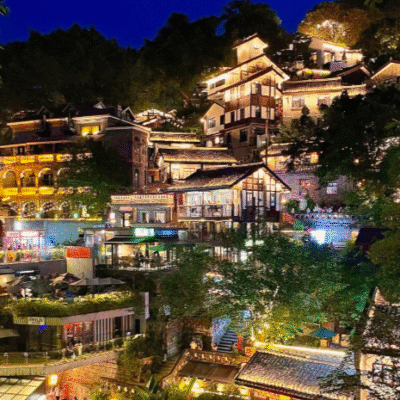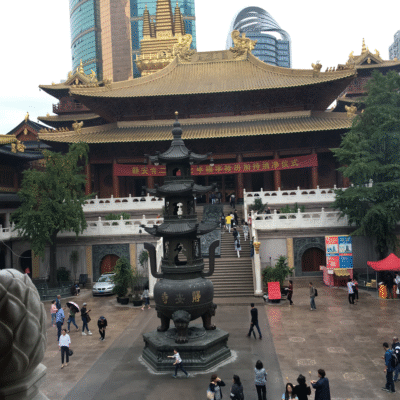I once mentioned China to my foreign friend, and the first thing that came to his mind was the Great Wall. Perhaps it’s because of the movie titled The Great Wall, or simply because the Wall is one of the world’s wonders. In any case, if you visit Beijing, the Great Wall is definitely a must-see attraction. It has welcomed visitors like U.S. presidents and countless travelers from around the world.
When was the Great Wall of China made?
Many foreign friends believe that the Great Wall of China was built during the Qin Dynasty, and even some Chinese people hold the same view. However, the truth is that the Great Wall was not constructed by a single dynasty all at once, but was continuously built, expanded, and reinforced over several dynasties. Below is a general timeline for your reference.
| Dynasty | Period | Key Contributions |
|---|---|---|
| Spring and Autumn / Warring States Period | Around 7th century BCE | Various feudal states (like Qin, Zhao, and Yan) built separate “border walls” for defense. |
| Qin Dynasty (221 BCE) | Around 214 BCE, after Qin unified China | Connected the earlier walls built by different states, forming the earliest version of the “Great Wall” to defend against northern Xiongnu. |
| Han Dynasty | Western Han, 2nd century BCE | Extended the wall westward to protect the Silk Road and border security. |
| Ming Dynasty (1368–1644 CE) | Mainly 15th–17th centuries | Built the most well-preserved and extensive sections of the Wall, over 8,800 km long. |
If you’re planning to visit this destination, our carefully curated guide will definitely be helpful for your trip.
Great Wall Travel Guide
My team and I have compiled detailed information about various sections of the Great Wall, including ticket prices, addresses, and more. With this table, you can get a clear overview of the locations and essential details of each site.
| Scenic Area | Address | Transportation Summary | Ticket Price (RMB) | Opening Hours | Notes |
|---|---|---|---|---|---|
| Badaling Great Wall | Jundu Mountain, Gangu Village, Yanqing District, Beijing | – Take S2 train from Beijing North Station (~1 hr), 10 min walk from Badaling Station – Bus 877 from Deshengmen (~2 hrs) – Self-drive via G6 Expressway Yanqing exit | Adult: 40 RMB Discount: 20 RMB Children under 1.2m free | Mar 1–Nov 30: 7:30 AM – 6:00 PM Dec 1–Feb end: 8:00 AM – 5:30 PM | Well-developed facilities, ideal for first-time visitors |
| Mutianyu Great Wall | Mutianyu Village, Bohai Town, Huairou District, Beijing | – Bus 916 Express from Dongzhimen (~1.5 hrs) – Self-drive via Jingcheng Expressway Huairou exit; parking available | Adult: 45 RMB Discount: 25 RMB Cable car one way: 30 RMB, round trip ~60 RMB | Summer: 7:30 AM – 6:00 PM Winter: 8:00 AM – 5:30 PM | Cable car available; less crowded than Badaling |
| Simatai Great Wall | Simatai Town, Miyun District, Beijing | – Bus 919 from Dongzhimen to Miyun North Station, transfer to shuttle bus – Self-drive via Jingcheng Expressway Miyun exit | Adult: 40 RMB Discount: 20 RMB Night tour ticket separate | 8:00 AM – 5:00 PM (night tours vary) | Steep sections, great for adventure and photography |
| Huangyaguan Great Wall | Huangyaguan, Shanhaiguan District, Qinhuangdao, Hebei | – High-speed train from Beijing to Qinhuangdao (~2.5 hrs), then bus or taxi (~40 mins) – Self-drive via Jingha Expressway Qinhuangdao exit | Adult: 60 RMB (peak season) Discount: 30 RMB | 8:00 AM – 6:00 PM | Coastal Great Wall with unique sea views |
| Juyongguan Great Wall | Juyongguan Town, Changping District, Beijing | – Bus 919 direct from central Beijing – Self-drive via Jingzang Expressway Changping exit | Adult: 40 RMB Discount: 20 RMB | 7:00 AM – 6:00 PM | Strategically important pass, known as “First and Greatest Pass under Heaven” |
Of course, we didn’t just compile information about the Great Wall — we also created a comprehensive travel guide to Beijing, based on insights from experienced travelers. This guide not only shows you where to find the best food and attractions, but also recommends great places to stay, helping you enjoy the city to the fullest.
Badaling Great Wall Guide
Badaling Great Wall is one of the most famous and well-preserved sections of the Great Wall of China, located in Yanqing District, Beijing.

The wall here is wide and relatively flat with a moderate slope, making it suitable for visitors of all ages and fitness levels. Thanks to its convenient transportation and well-developed tourist facilities, Badaling attracts a large number of domestic and international tourists, including many world leaders such as U.S. presidents during official visits to China.
Our Recommendations
Here are some useful tips to make your visit to Badaling Great Wall smoother and more enjoyable. First, try to avoid weekends and public holidays—visit on weekdays, preferably early in the morning right at opening time or later in the afternoon when the crowds are smaller.

It’s best to purchase tickets online in advance through official channels to skip long queues at the entrance. Wear comfortable, slip-resistant shoes and bring sun protection like hats and sunglasses, as the sun can be strong.
Since food and drinks inside the area tend to be expensive and limited in variety, it’s a good idea to bring your own water and light snacks. Taking the cable car up can save energy, while walking down allows you to enjoy different views.
If bringing your own food isn’t convenient, you can purchase snacks and drinks at the following locations. Our team has compiled the price information below, based on research conducted by a colleague who visited the area before writing this article.
| Shop Type | Location | Main Products | Price Range (RMB) | Notes |
|---|---|---|---|---|
| Souvenir Shops | Near entrance and visitor center | Keychains, postcards, fridge magnets, silk products, apparel | 10–200 RMB (varies by item) | Prices vary widely depending on item |
| Food & Beverage | Along main sightseeing paths and entrance | Bottled water, drinks, snacks, local specialties | Water ~5 RMB, snacks from 10 RMB | Prices slightly higher than outside |
| Outdoor Gear | Near entrance and visitor center | Hiking sticks, hats, sunglasses, sunscreen, rain gear | 20–100 RMB | Stock basic hiking and emergency gear |
| Photography Services | Near main viewing platforms | Professional photos and prints | From 20 RMB per photo | Good for souvenir photos |
Badaling Great Wall Address:
Near Exit 58, G6 Jingzang Expressway, Yanqing District, Beijing

Before your trip to Badaling, always check the weather forecast, as rainy or bad weather can make climbing dangerous. Download the official guide app or rent an audio guide to greatly enhance your understanding of the Great Wall’s history and culture. Lastly, remember to bring your passport or valid ID when purchasing tickets or claiming discounts. Following these tips will help you explore Badaling safely .

How to Purchase Tickets
The day before you decide to visit Badaling, please make sure to visit the official Badaling ticketing website. Once you enter the site, you will see a page like the following.
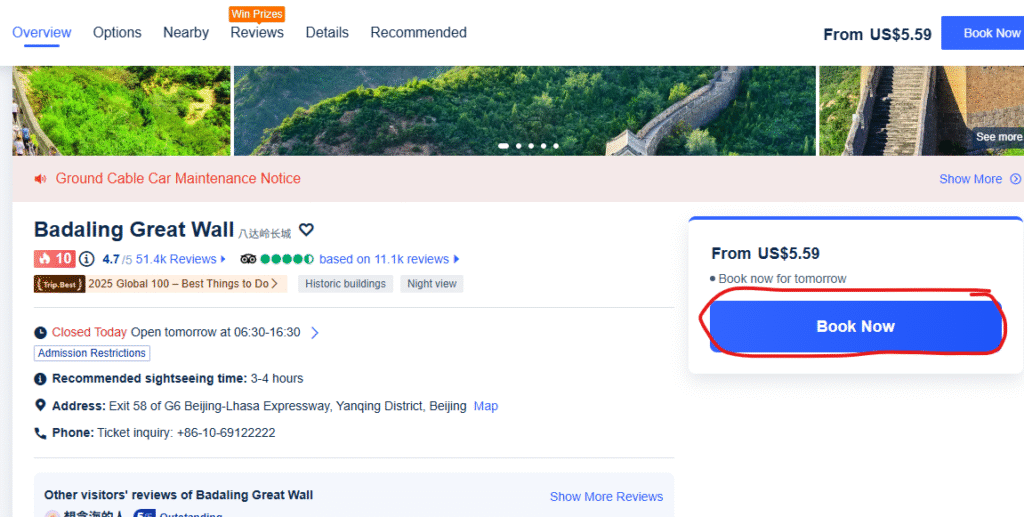
If you have any questions during the process, you can email us for assistance.
Mutianyu Great Wall
Besides the famous Badaling section, there are many other parts of the Great Wall around Beijing, each with its own unique character waiting to be explored! As someone who has traveled to these different sections many times, I will continue to share my firsthand experiences and introduce you to other distinctive stretches of the Great Wall.

If you’re looking for a comfortable visit combined with breathtaking scenery, Mutianyu Great Wall is your best choice. Located in the lush greenery of Huairou District, it’s renowned as a prime example of the “most beautiful” sections of the Great Wall.
The wall here is sturdy and the paths are well-maintained, making it suitable for visitors of almost all ages.

Architecturally, it features densely packed watchtowers and both inner and outer fortifications. You can take a closed cable car up the wall or try the open-air chairlift.
When coming down, don’t miss the classic dry sled ride—speeding through the forest is an unforgettable thrill!
Guide Recommendations:
Classic Route: Take the cable car up to Watchtower No.14, then walk eastward to Watchtower No.20. This section is the highlight of Mutianyu Great Wall, offering wide open views and beautiful scenery. If you have enough stamina, you can continue westward to explore further sections, but please gauge your physical condition and proceed accordingly.
Recommended Accommodation Areas:
Option 1: Beijing City Center — Convenient and fast. Mutianyu is not far from the city, making day trips very easy. Staying near Dongzhimen or Sanlitun is recommended. Dongzhimen is a major transport hub with bus terminals to Huairou district; Sanlitun offers a lively area with abundant dining and entertainment choices.
Option 2: Around Mutianyu Village — Scenic and tranquil. For those who want to experience peaceful mountain living, staying in the villages at the foot of the Great Wall is ideal. There are many boutique guesthouses and farm stays converted from local homes. For example, the famous Schoolhouse (The Schoolhouse) also offers accommodation, allowing you to enjoy the quiet of the Great Wall at dawn or dusk.
Popular Food Recommendation:

The Schoolhouse: This restaurant, transformed from an old abandoned primary school, is famous for its unique setting and authentic Western cuisine. It is very popular locally and frequently ranks high on various recommended lists.
Menu address of Wachang Hotel
Simatai Great Wall

Simatai Great Wall is the only section that has preserved its original Ming Dynasty appearance and is recognized by UNESCO as the “Original Great Wall.” Known for its five distinctive features—steepness, density, uniformity, ingenuity, and completeness—it’s a true treasure for adventurers, photographers, and history enthusiasts.
Famous for its dramatic cliffs, parts of the wall rise sharply along sheer drops, inspiring awe in all who visit. Complementing this daytime ruggedness is a unique night tour experience: after dark, the illuminated wall winds like a glowing dragon, beautifully reflected by the ancient Gubei Water Town below, creating one of the most enchanting and serene scenes along the Great Wall.
Guide Recommendations:

Combined Visit: Simatai Great Wall and Gubei Water Town are operated as a single integrated scenic area. The most popular itinerary is to explore the charming water town in the afternoon, then take the cable car up to the wall at dusk to enjoy the stunning sunset and nighttime views.
Safety Tips:The “wild” nature of Simatai means that not all sections are fully restored or modernized. Be sure to wear professional hiking shoes with good traction, and strictly follow the signs and guidelines for open areas to ensure your safety.
Recommended Accommodation Area:
If you’re planning to visit Simatai Great Wall, I highly recommend staying inside Gubei Water Town. It’s not only the most convenient option, but also the only way to truly enjoy the full experience—especially the unforgettable night tour of the illuminated Great Wall.
Within the town, there’s a wide variety of accommodation to choose from. You’ll find everything from the luxurious five-star Gubei Water Town Hotel, to beautifully designed boutique hotels, to cozy and affordable guesthouses that reflect the local charm. No matter your budget or travel style, there’s something here for you.
Top Food Recommendations

Guguan Hotpot City: Located on the food street in Gubei Water Town. After climbing the Great Wall, enjoying a steaming hot copper pot of sliced meat is the perfect way to relax and recharge.
Gubei Roast Duck King: Want to taste authentic Peking Duck right at the foot of the Great Wall? This restaurant has you covered. Their roast duck features crispy skin and tender meat, paired with the unique scenery of the water town for a truly special dining experience.
Jinshanling Great Wall
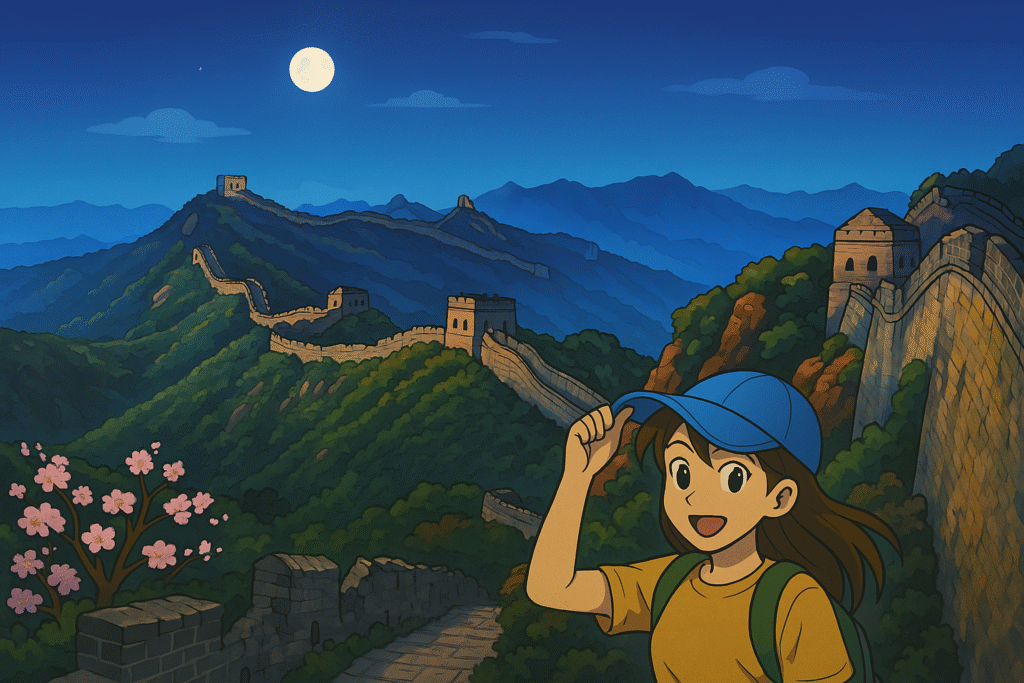
“The Great Wall stretches for thousands of miles, but Jinshanling stands out uniquely.” This phrase perfectly captures the significance of Jinshanling.
Located on the border between Beijing and Hebei, Jinshanling features a variety of watchtower designs and continuous mountain ridges. It attracts far fewer visitors than Mutianyu, making it a favorite among photography enthusiasts and long-distance hikers.
The hiking route from Jinshanling to Simatai is often called “the most beautiful section of the Great Wall.” Along this trail, you can see well-preserved parts of the wall as well as untouched “wild” sections that have not been restored, allowing you to personally experience the passage of history. Especially in spring, when the apricot blossoms bloom, and in autumn, when the forests turn vibrant colors, every scene at Jinshanling is worthy of being a photographic masterpiece.
Guide Recommendations:
Best Time to Visit:
Sunrise and sunset are the “magical moments” at Jinshanling. To capture the most stunning light and shadows, it’s highly recommended to stay overnight nearby.
Physical Preparation:
The hiking distance at Jinshanling is relatively long, about 5–6 kilometers, with significant ups and downs that require a good level of fitness. Be sure to bring plenty of drinking water, energy snacks, and prepare for extended sun exposure.
Recommended Accommodation Areas:
- Top Choice: Farmhouses near the scenic area entrance. Staying here offers the most convenient access for photographing sunrise and sunset as well as for in-depth hiking. These farmhouses usually provide both lodging and meals, and since the owners are locals, they can offer many practical tips.
- Official Option: Jinshanling Great Wall Hotel. Located inside the scenic area, this officially managed upscale hotel offers standardized facilities and reliable service, making it a great choice for travelers seeking a stable and comfortable stay.
Popular Food Recommendations:
Local farmhouses around the Jinshanling entrance and nearby areas offer fresh, authentic farmhouse cuisine. While there’s no unified brand, most serve genuine local dishes. When choosing where to eat, consider checking online reviews on platforms like Dianping or observing how busy the restaurant is on site.
Juyongguan Great Wall
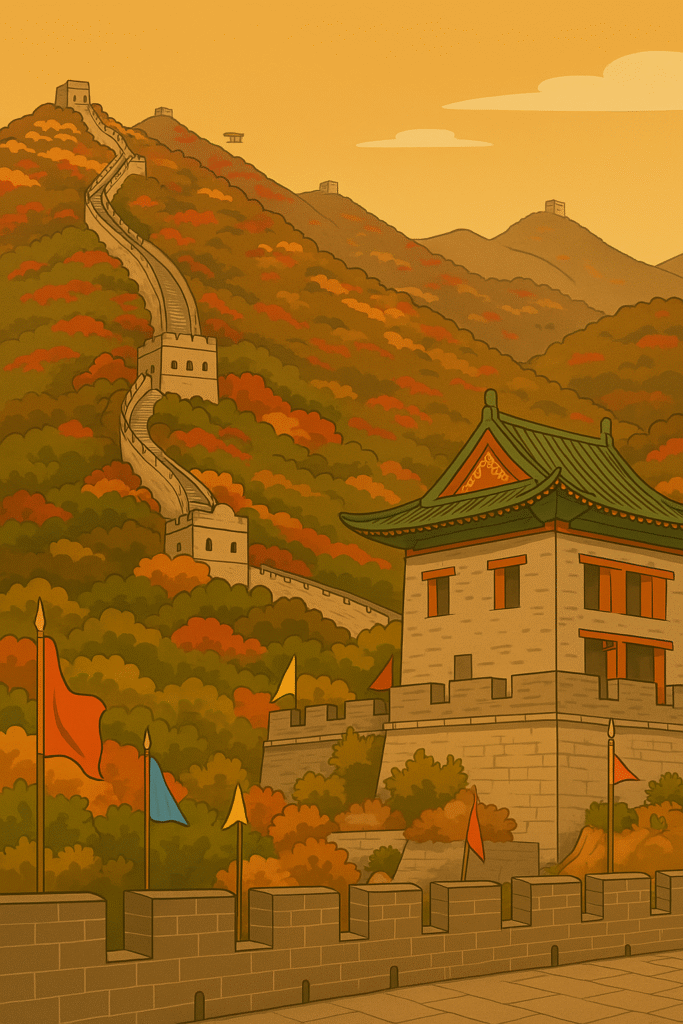
Juyongguan is a well-preserved ancient military fortress located on the key pass leading to Inner Mongolia.
Famous as the “First and Greatest Pass Under Heaven,” Juyongguan stands out from other sections of the Great Wall by emphasizing its role as a fortified gate city in the defense system.
Here, your visit feels more like a journey through history. You can closely observe ancient structures such as the barbican, water gate, and watchtowers. You can even touch the intricately carved white marble terraces from the Yuan Dynasty, experiencing the historical marks left by different eras.
Guide Recommendations:
Learning Journey:
Before visiting Juyongguan, it’s helpful to do some research and learn about its historical background. Touring with questions in mind will make your experience more rewarding.
Convenient Transportation:
Juyongguan is one of the Great Wall sections closest to downtown Beijing and is easily accessible by public transportation, making it ideal for a day trip.
Recommended Accommodation Areas:
- Highly Recommended: Downtown Beijing. Visiting Juyongguan usually takes about half a day, so there’s no need to stay nearby. Staying in the city center is a better choice.
- Convenient Areas: To make taking the bus to Juyongguan easier (such as from Deshengmen Station), consider staying near Xizhimen, Jishuitan, or Guloudajie. These neighborhoods offer convenient transportation and are close to Beijing’s historic and cultural core, allowing you to easily plan other activities.
Popular Food Recommendations:

Beijing Yangfang Shengli Hotpot (Main Branch): Very convenient on the way back. Yangfang hotpot is famous in Changping and Beijing, known for authentic lamb and traditional sesame sauce—definitely worth trying!
Changyucheng Pig’s Trotters Feast: Located in Liucun Town at the foot of the Great Wall, Changyucheng Village is famous for its slow-cooked pig’s trotters in iron pots—tender, flavorful, and a local specialty.
Wulan Za Sui Guan: A small, beloved local eatery in Changping Nankou area. A steaming bowl of lamb offal soup and meat-stuffed baked flatbread is the perfect comfort for tired travelers.
Laolongtou Great Wall
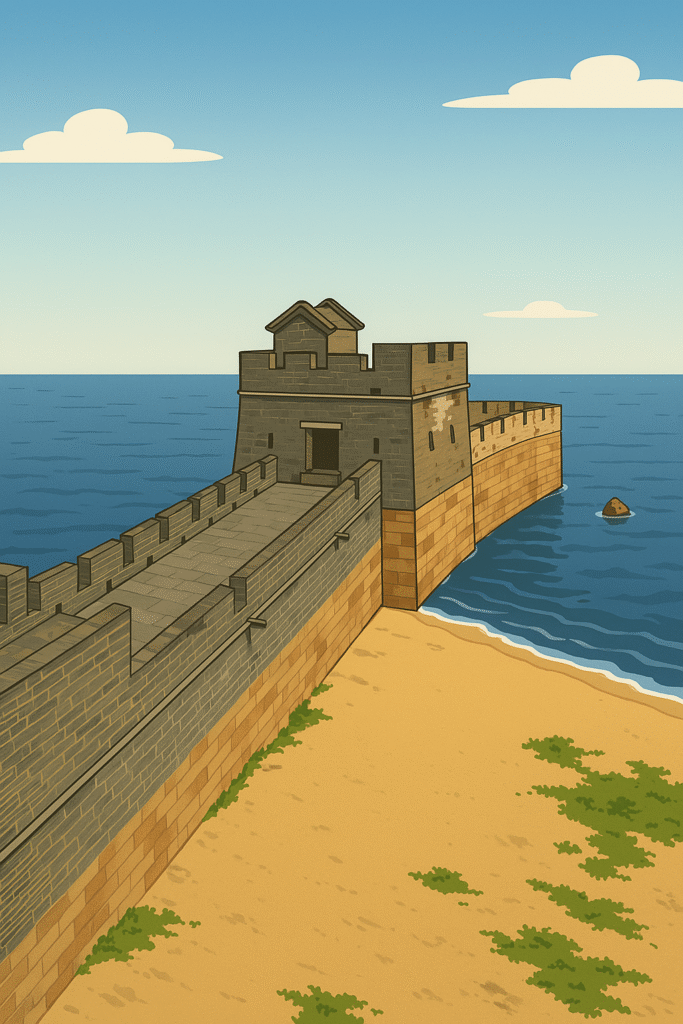
Imagine the Great Wall as a giant dragon winding its way across the land, finally dipping its head into the deep blue sea—that is the unique charm of Laolongtou Great Wall. As the eastern starting point of the Ming Great Wall, it is located in the Shanhaiguan District of Qinhuangdao, Hebei Province, and is the only section of the Great Wall that meets the sea in China. Here, you can not only admire the majestic Wall itself but also experience the stunning scenery where the Wall merges with the ocean. With the sea breeze on your face and waves crashing against the shore, the Great Wall seems to come alive, stretching out toward the distant sea.
Guide Recommendations:
Best Viewing Time:
Sunrise or sunset offers the most spectacular views, as the Great Wall weaves together with the sea in the soft morning or evening light.
Climb High to View the Sea:
Climb up Chenghailou Tower for a wide, unobstructed view where the Great Wall meets the sea. From here, you can also gaze out over the distant coastline and the vast, rolling ocean.
Maritime Defense Experience:
Take a close look at the design of the stone city where the wall meets the sea, and appreciate the clever integration of ancient military defense with the natural environment.
Recommended Accommodation Areas:
- Shanhaiguan District / Qinhuangdao City: Laolongtou is close to both the Shanhaiguan Ancient City and Qinhuangdao city center. Staying in Shanhaiguan offers a deeper cultural and historical experience, while Qinhuangdao city provides a wider variety of hotels and more complete amenities.
Popular Food Recommendations:

Seafood, of course! Being by the sea, fresh seafood is a must. In Shanhaiguan and Qinhuangdao, you can enjoy a wide variety of shellfish, fish, shrimp, and crab, prepared in diverse and delicious ways.
In Conclusion
As you stand at the foot of the Great Wall, gazing at the vast expanse of history stretching before you, it’s hard not to feel a deep sense of awe. Whether you’re exploring its ancient stone pathways or simply taking in the panoramic views, the Wall offers a glimpse into China’s rich past.
Visiting this incredible landmark is not just about seeing a wonder of the world—it’s about connecting with the enduring spirit of a civilization that has stood the test of time. So, when in Beijing, don’t miss the chance to walk the path that has captured the imagination of travelers for centuries, leaving with memories that will last a lifetime.


